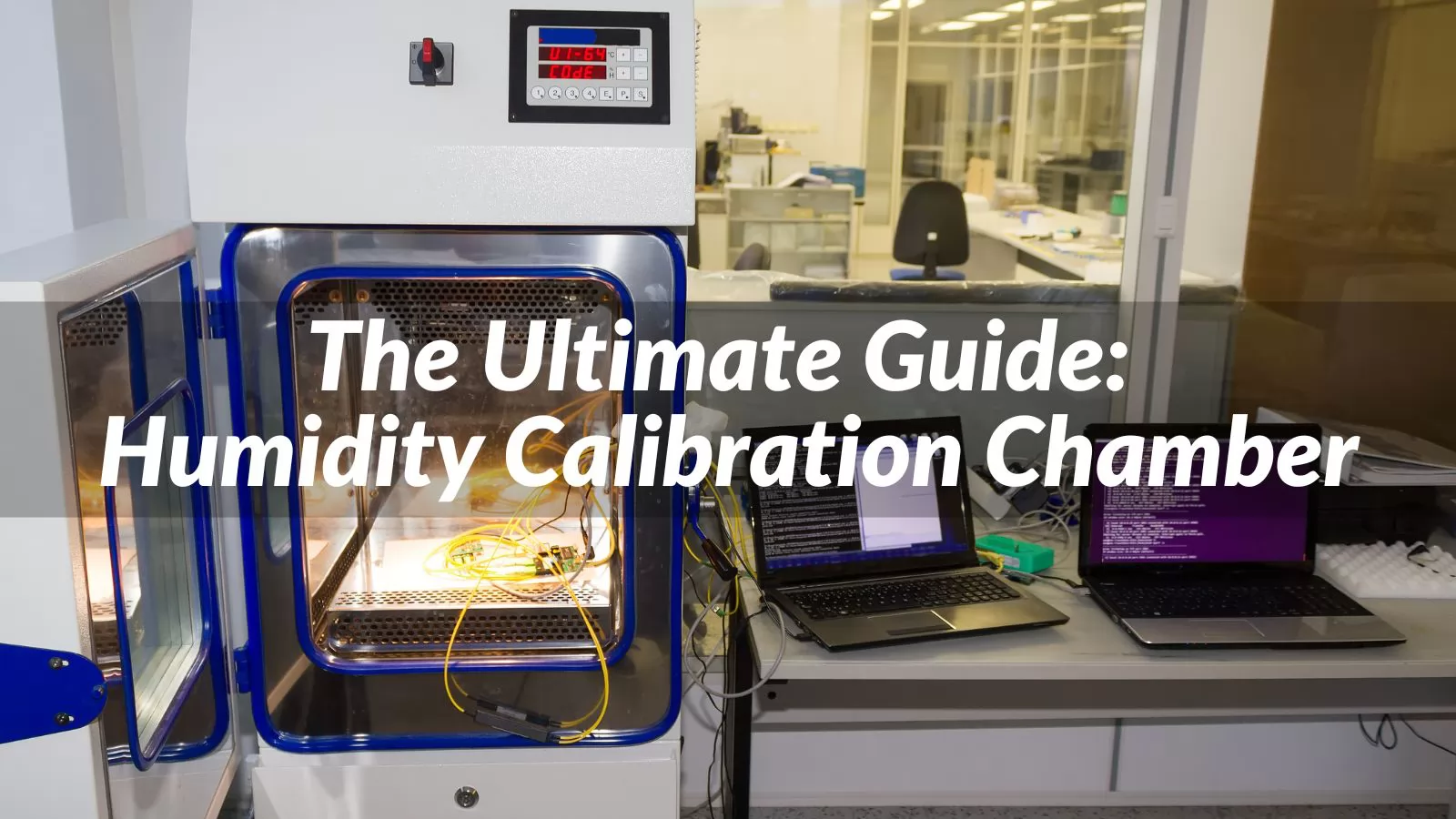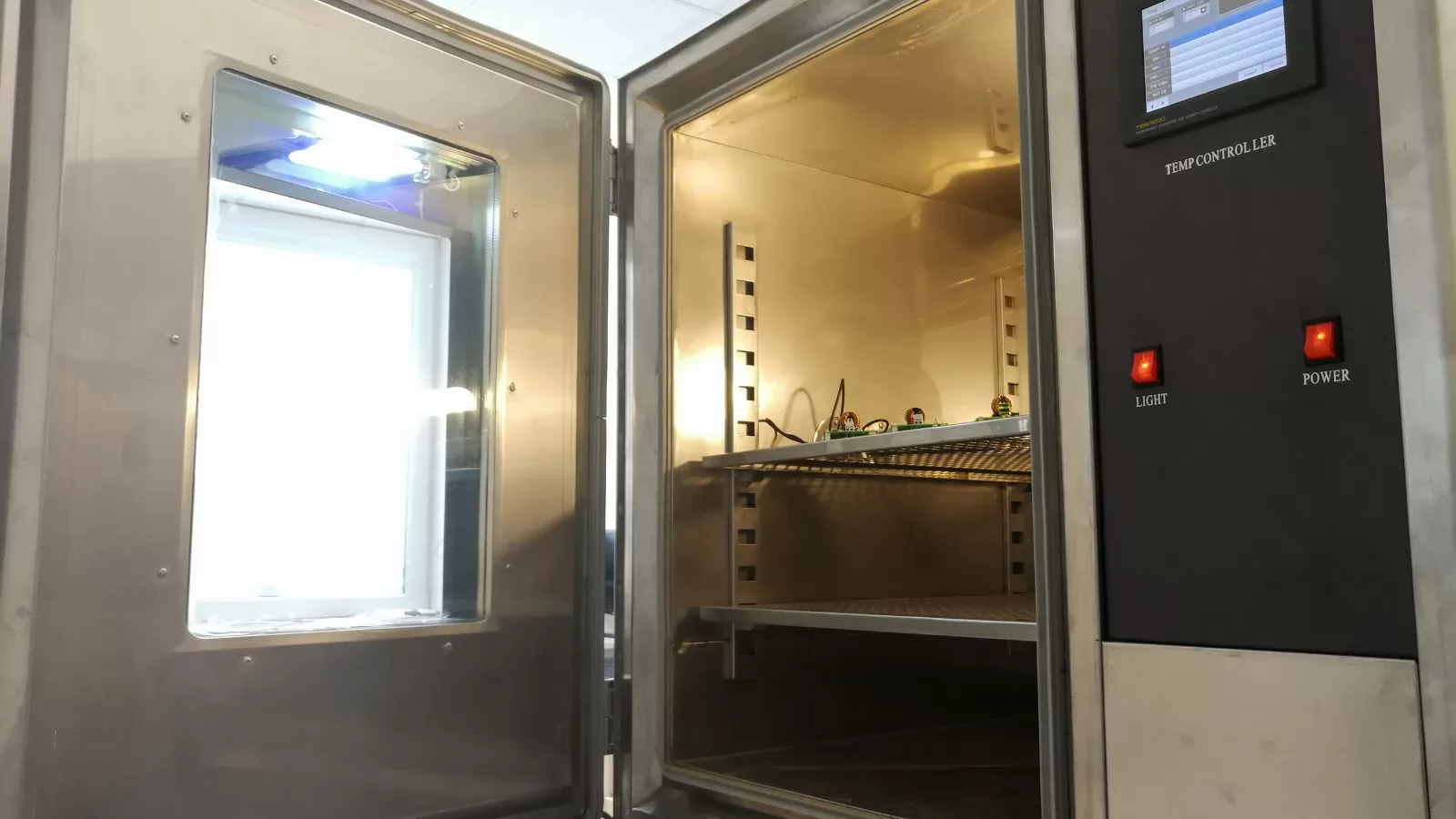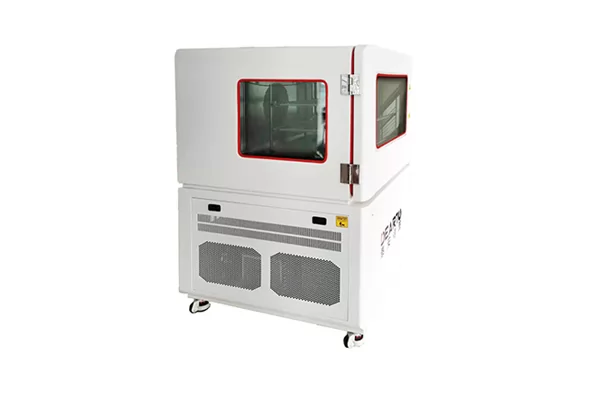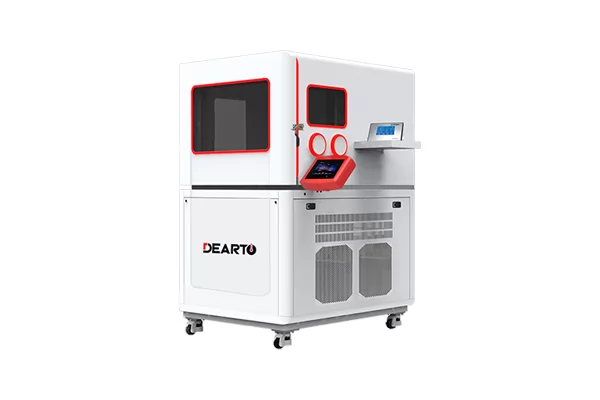
Are you looking for information about humidity calibration chambers? Whether you are looking for knowledge about humidity calibration chambers or want to get relevant market data, this ultimate guide will give you the answers.
How Does a Humidity Calibration Chamber Work?
Humidity calibration chamber is a device used to calibrate humidity sensors, which can provide a constant relative humidity environment.
The working principle of the humidity calibration box is to use two water tanks with different temperatures, one as the dry bulb temperature and the other as the wet bulb temperature, to adjust the humidity in the box by controlling the heating and cooling of the water tank and the wind speed of the fan. The humidity sensor is placed in the box and compared with a standard hygrometer to obtain the sensor error and correction coefficient.
Temperature and humidity control technology:
The humidity control adopts the split flow method humidity generation principle. Compared with the dual temperature method humidity generation principle, it greatly shortens the time required for stabilization and improves the verification efficiency.
The temperature control adopts liquid bath constant temperature plate heating technology, and the liquid medium radiates heat, making the temperature more constant and the temperature field more uniform.
Calibration Process of Humidity Calibration Chamber
The calibration process of the humidity calibration box refers to using a standard humidity source to verify the humidity calibration box to determine whether its performance indicators meet the specified requirements. The calibration process of the humidity calibration box generally includes the following steps:
1. Preparation work: including selecting appropriate standard humidity sources, such as wet and dry bulb thermometers, capacitive humidity sensors, etc.; installing the humidity calibration box and standard humidity source to ensure that the temperature difference and air flow between them do not affect the measurement results; prepare Thermal and humidity calibration box to achieve stable working condition.
2. Selection of calibration points: Select appropriate calibration points according to the usage range and accuracy requirements of the humidity calibration box, such as relative humidity of 20%, 50%, 80%, etc. Each calibration point should be tested at different temperatures, such as 20℃, 25℃, 30℃, etc.
3. Calibration process: At each calibration point, read the display values of the humidity calibration box and standard humidity source respectively, record them, and calculate the error between them. Repeat the measurement multiple times and take the average as the final error value. If the error value exceeds the specified allowable deviation, the humidity calibration box needs to be adjusted or repaired.
4. Calibration report: Based on the measurement results, fill in the calibration report of the humidity calibration box, record its performance indicators, error values, uncertainty and other information, and stamp it with a valid calibration seal or signature. The calibration report should be kept for future inquiry or verification.
Main Components of a Humidity Calibration Chamber
What are the main components of a humidity calibrator? Generally it can be divided into the following aspects:
|
Humidity Sensor: |
measures and controls the relative humidity inside the humidity calibrator, usually using a capacitive or resistive humidity sensor. |
|
Temperature sensor: |
measures and controls the temperature inside the humidity calibrator, usually using a thermocouple or platinum resistance temperature sensor. |
|
Humidifier: |
Provides water vapor inside the humidity calibrator, thereby increasing relative humidity |
|
Dehumidifier: |
used to remove excess water vapor from inside the humidity calibrator, thus reducing relative humidity |
|
Fan: |
Forms a uniform air flow inside the humidity calibrator to ensure the uniformity and stability of temperature and humidity |
|
Controller: |
Receives and processes signals from sensors to control the working status of humidifiers, dehumidifiers and fans |
What Types of Humidity Calibration Chambers Are There?
Constant temperature and humidity box: The constant temperature and humidity box can control temperature and humidity at the same time, using a refrigeration system and a humidification system to adjust the temperature and moisture content of the air. Constant temperature and humidity chamber is suitable for occasions with high temperature and humidity requirements, such as laboratories, electronics, medicine and other industries.
Humidity generator: Humidity generator is mainly used to generate different relative humidity, using two-way gas mixing method or saturated salt solution method to adjust the moisture content of the air. Humidity generators are suitable for occasions that do not have high temperature requirements but require high humidity accuracy, such as meteorology, environmental protection and other industries.
Moisture and heat circulation box: The heat and humidity circulation box is mainly used to simulate different temperature and humidity changing conditions, using a refrigeration system and a humidification system to periodically change the temperature and moisture content of the air. Humidity and heat circulation chamber is suitable for occasions that have a greater impact on temperature and humidity changes, such as automobiles, aviation and other industries.
The Most Common Applications for Humidity Calibration Chambers

Common applications for humidity calibration chambers include:
Calibrate hygrometers: Calibrate various types of hygrometers, including dew point meters, resistive hygrometers, and thermal hygrometers.
Testing Moisture Sensitive Materials: Test moisture sensitive materials such as electronic devices, pharmaceuticals, and food.
Study the effects of humidity on materials: Study the effects of humidity on material properties such as corrosion, expansion, and contraction.
Humidity Calibration Chamber Price
The price of regular-sized temperature and humidity calibration chambers of mid-to-high-end Chinese product brands is around US$18,000, and the price of enlarged-sized temperature and humidity calibration chambers is around US$28,000. The prices of temperature and humidity calibration chambers produced in Europe and the United States vary greatly, with prices around US$48,000.
More information: Temperature and humidity Calibration Chamber Price
Etalon Selection Table
|
Name of product |
Model No. |
Temp range |
Resolution |
Accuracy |
|
Standard electric ventilation psychrometer |
DTBG |
5~100℃ |
0.01℃ |
±0.2℃ (Optional 0.1℃) |
|
Accurate dew-point instrument |
Optidew401 |
-40~90℃ |
0.01℃ |
Temp:±0.1℃; Dew-point: ±0.15℃ |
|
Dewstar R-1 |
-40~60℃ |
0.01℃ |
±0.15℃ |
|
Precision digital thermometer |
DTSW-LcG |
-30~150℃ |
0.001℃ |
±0.05℃ |
|
Domestic dew point apparatus |
DT-ACG |
-40~+90℃ |
0.01℃ |
±0.2℃ |
What Should I Know Before Choosing a Humidity Calibration Chamber?
The performance indicators of the humidity calibration box include temperature range, temperature stability, temperature uniformity, relative humidity range, relative humidity stability, relative humidity uniformity, etc.
The volume and size of the humidity calibration box depends on the number and size of humidity sensors you need to calibrate, as well as your experimental space and budget.
The operation methods of the humidity calibration box include manual operation and automatic operation. Manual operation requires you to set the temperature and relative humidity parameters yourself and monitor the calibration process. Automatic operation can realize different temperature and humidity cycles through a program controller or computer software. and data logging.
Maintenance and maintenance of the humidity calibration box, which involves cleaning, drying, disinfecting, replacing consumables, etc. of the humidity calibration box to ensure the normal operation and service life of the humidity calibration box.
Recommended Humidity Calibration Chamber

Product Features:
● Ultra-low temperature calibration chamber, the lowest can reach -30°C, and the humidity range can reach 5%RH-95%RH;
● HD touch screen;
● Mobile phone/Pad remote control, support USB, RS-232, Wifi, etc., real-time communication with PC; With multi-segment programming function;
● Multi-point calibration, sub-section control, multiple protection alarms;
● Temperature and humidity change rate reminder, curve display, timing switch, etc.

Product Features:
● Advanced technical principles
● Product intelligence
● Excellent quality
● Upgraded to Automatic Verification System
What Humidity Calibration Chamber Manufacturers Are There?
Dearto (China)
Thunder Scientific (US)
Fluke Calibration (US)
Fensor (France)
Michell Instruments (UK)
Related Professional Terms
Humidity: The amount of water vapor in the air.
Relative humidity: The ratio of the amount of water vapor in the air to the maximum amount of water vapor that the air can hold at a given temperature.
Absolute humidity: The actual amount of water vapor in the air, measured in grams per cubic meter.
Dew point: The temperature at which the air becomes saturated with water vapor and condensation begins to form.
Calibration: The process of comparing a measurement device to a known standard to determine its accuracy.
Standard: A device or substance that has been calibrated to a known value.
Traceability: The ability to trace the accuracy of a measurement device back to a national or international standard.
Accuracy: The degree to which a measurement device measures the correct value.
Precision: The degree to which repeated measurements of the same value are close together.
Repeatability: The ability of a measurement device to produce the same result when measuring the same value multiple times under the same conditions.
Reproducibility: The ability of a measurement device to produce the same result when measuring the same value multiple times under different conditions.
Humidity sensor: A device that measures humidity.
Humidity calibrator: A device that is used to calibrate humidity sensors.
Humidity chamber: A controlled environment that is used to calibrate humidity sensors.
Humidity standards: Standards that are used to calibrate humidity sensors.







